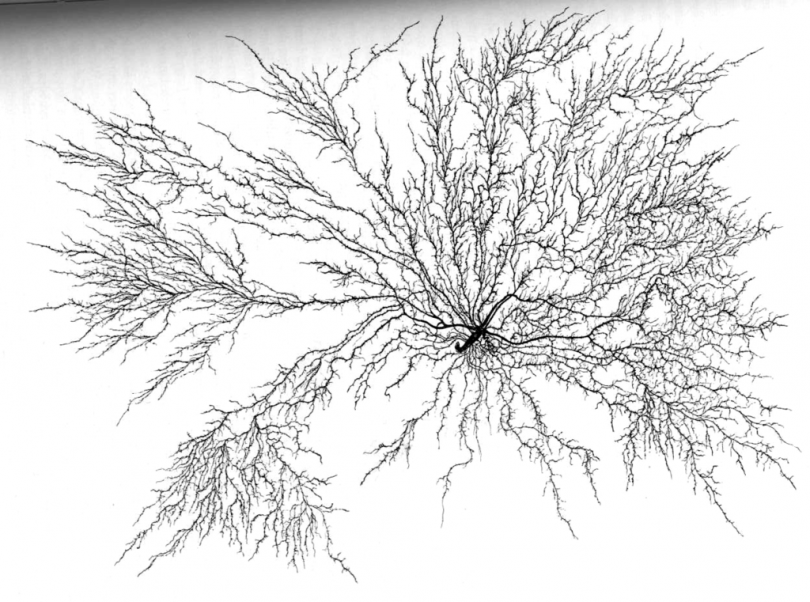Cannabis roots have been used medicinally through ancient history. While there is little medicinal use of cannabis roots today, historical medical texts tell us much about how they were once used. Ancient cultures across the globe took advantage of the medicinal benefits of cannabis roots. The research paper “Cannabis Roots: A Traditional Therapy with Future Potential for Treating Inflammation and Pain” tells us about the historical use of cannabis roots in medicine, and explains what active compounds might be at work and how they were prepared and applied. [1]
Cannabis roots contain many active compounds. However, they do not contain cannabinoids. The authors listed cannabis root compounds (as quantified in other studies) as follows:
- Triterpenoids: friedelin (12.8 mg/kg) and epifriedelanol (21.3 mg/kg)
- Alkaloids: cannabisativine (2.5 mg/kg) and anhydrocannabisativine (0.3 mg/kg)
- Carvone and dihydrocarvone; N-(p-hydroxy-b-phenylethyl)-p-hydroxy-trans-cinnamamide (1.6 mg/kg)
- Sterols: sitosterol (1.5%), campesterol (0.78%), and stigmasterol (0.56%)
- Minor Compounds: choline
Gout, Arthritis, and Joint Pain: Boiled hemp root poultices and cannabis root decoctions were used topically to treat gout, sciatica, arthritis, and joint pain as far back as 1542.
Fever: 12th century Persian Philosopher Ibn Sina recommended a compress with boiled cannabis roots for fever reduction. In Argentina, cannabis root was also used to treat fever, especially for malaria. Their preparation called for 30 g of root per liter of water or 15 g dried cannabis root. Argentinians used cannabis root topically and orally to reduce fever.
Inflammation: Cannabis root decoction along with full plant and bud have been used to treat inflammation since the 17th century. Herbalists like Nicholas Culpeper and English physicians like Robert James applied poultices of boiled cannabis root to inflammation and relief of nerve pain.
Skin Burns: The first recorded use of cannabis roots for skin burns was in 1542. It was first recommended to be used topically in the form of a decoction. Later in the 1600s and 1700s, it was ground fresh and pounded with butter to mix its juices with fat prior to topical application for burns.
Hard Tumors: It is unclear if old texts were referring to what we know as cancerous tumors or if they meant abscess, sores, ulcers, or swelling. Boiled cannabis root compresses were applied topically for relief according to 12th and 18th century texts.
Childbirth: Ancient Chinese medical texts tell that hemp root juice or decoction was taken orally or topically for cessation of hemorrhage after childbirth, strangury, flooding and spotting, vaginal discharge, difficult delivery, retention of the placenta, and knocks and falls.
Gonorrhea: In 17th century Indonesia, male and female cannabis roots were eaten to treat gonorrhea in Moorish culture.
Gastrointestinal Activity: On French Réunion Island, boiled cannabis roots were used to reduce vomiting in infants. Conversely, in Chile, hemp roots were said to be used to induce vomiting. Tonics of cannabis bark, seed, or root were made into a tonic to alleviate stomach pains and remove toxins.
Infection: Persian medical texts refer to the use of a boiled cannabis root and leaf poultice to treat the bacterial skin infection erysipelas. In Argentina, hemp root was also used orally, topically, and intrarectally to treat infections. [1]
References
- Ryz NR, Remillard DJ, Russo EB. Cannabis roots: A traditional therapy with future potential for treating inflammation and pain. Cannabis and Cannabinoid Research. 2017;2(1):210-216. https://www.liebertpub.com/doi/full/10.1089/can.2017.0028. [Times Cited: 13 (Semantic Scholar) Impact Factor: 5.764]
Image: Topview on radix of Cannabis sativa by Prof. Dr. Lore Kutschera, CC BY-SA 2.5








